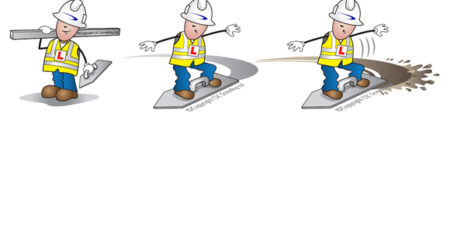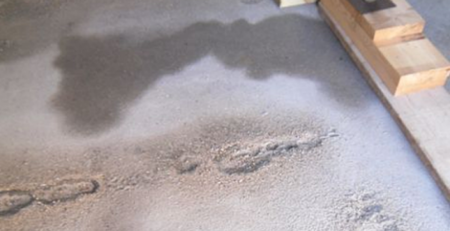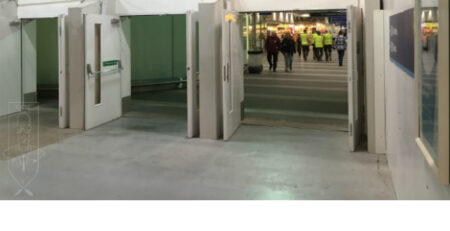BRE drop hammer test
The BRE drop hammer test identifies areas of a screed that may not be strong enough to withstand anticipated loads or traffic. The test is becoming increasingly routine in construction to ensure the quality of mix proportions, mixing and compaction of the screed. It can also help in the investigation of screed collapse.
Why and when is it done?
It is advisable to carry out a BRE drop hammer test as soon as you have any doubts about the amount of water in the screed mix, or mixing/compaction issues, as all these can affect the soundness of the screed. Other signs to look out for are:
- Crumbling/friability of screed
- Non-uniform screed colour
- Patches of broken down-screed below vinyl
The BRE Drop Hammer Test can is also used as a precautionary quality check to ensure the set and hardened screed will be strong enough for its intended use.
The test can be done when the screed is 14 days old, but given that screed continues to gain strength for up to 28 days, it is best to carry out the test a minimum of four weeks after installation.

How is it done?
An annular weight (4kg for category A, B and C bonded and unbonded screeds, and 2kg for category C floating screeds under 75mm) is dropped from a distance of 1 m down a rod, to strike the collar of an anvil, the face of which is in contact with the screed surface. The area of contact is a cylindrical face of 25.23mm in diameter and after four consecutive drops of the weight in the same position, the depth of the resulting indentation is measured to determine the ability of the screed to carry traffic. Measurements are made to the nearest 0.1 mm using a depth gauge.
A minimum of three tests is recommended for areas of 20 sq.m or less, whereas for areas greater than 20 sq.m the recommendation is to go for a minimum of three tests per 20-25 sq.m. Tests are generally carried out at an interval of 3–5 m in corridors, but test positions should be kept random, including vulnerable areas adjacent to bay joints, cracks and in doorways.
Acceptance Limits
| Category | Description | Maximum depth of indentation (mm) | |
| Bonded and Unbonded Screeds | Floating Screeds | ||
| Category A | Screeds subject to heavy foot traffic and/or heavy trolleys, or where a breakdown of the screed would be unacceptable. Hospitals are a good example where thin sheet flooring is applied. | 3 | 3 |
| Category B | Screeds subjected to heavy foot traffic, e.g. medium-weight trolleys, public areas, canteens, corridors, lobbies, hospital wards, offices | 4 | 4 |
| Category C | Screed for light foot traffic, e.g. domestic use | 5 | 2.5 (use 2kg weight only) |
The Screed Scientist has an Apprentice!
If you have joined our gang on the Screed Scientist website to learn a thing...
Screed Protection Considerations
Protection to levelling floor screeds should be carried out as soon as possible after installation....
Wearing (Granolithic) Screed, what is it and where best to use it.
Wearing screeds, widely known by the former name of granolithic screeds, are high-density toppings suitable...




